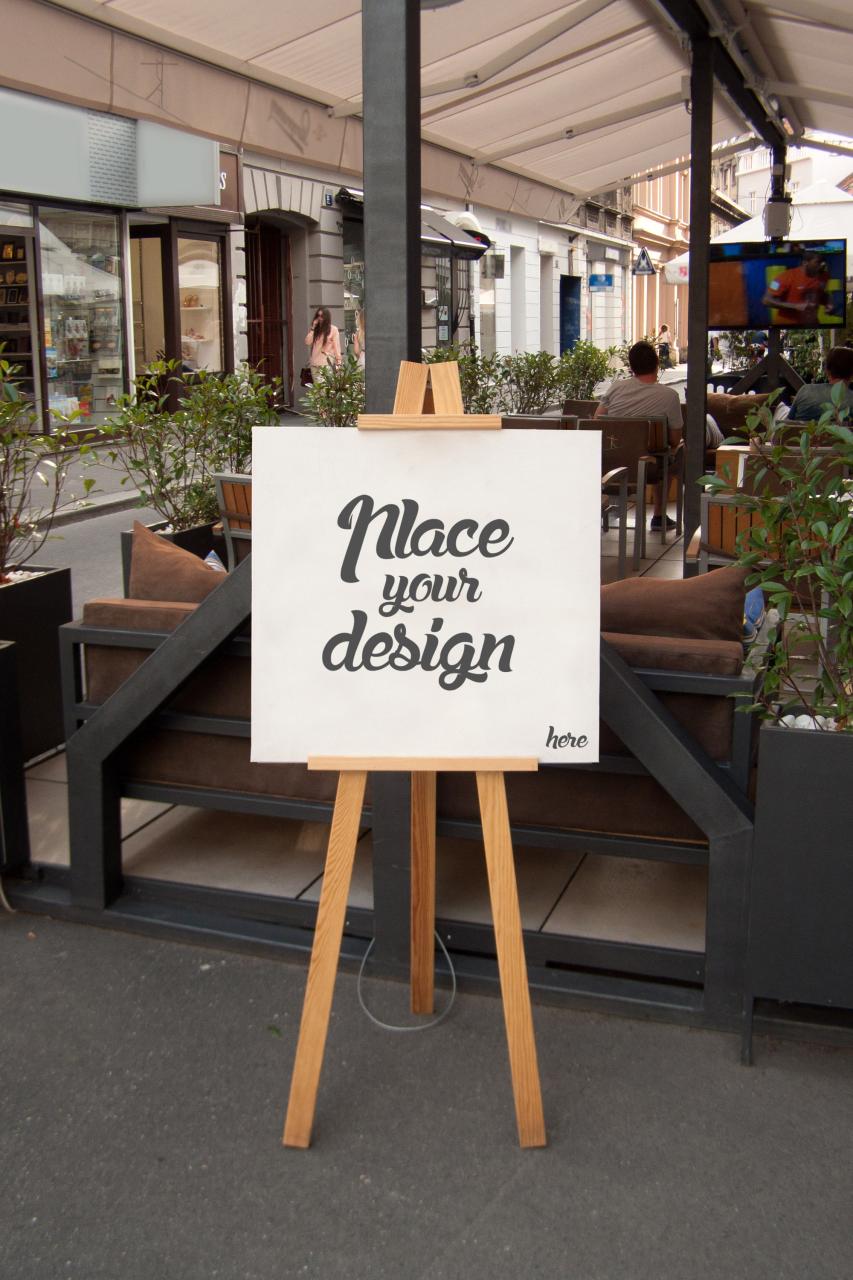
The Art of Easel Mockups: A Comprehensive Guide
Easel mockups are a cornerstone of visual communication in the art and design domains. These versatile tools allow artists, photographers, and designers to showcase their creations in a realistic and engaging manner, amplifying their impact and appeal. Whether you’re a seasoned professional or an aspiring enthusiast, understanding the nuances of easel mockups can elevate your artistic endeavors to new heights.
Understanding Easel Mockups
An easel mockup is a digital representation of a physical easel, complete with a canvas or artwork attached. It provides a simulated environment for displaying your artwork in various settings, such as studios, galleries, or even virtual exhibitions. By leveraging the power of photo editing software, you can effortlessly insert your artwork into the easel mockup, creating a realistic and professional presentation.
The Benefits of Easel Mockups
Incorporating easel mockups into your workflow offers numerous advantages:
Enhanced Visual Appeal: Mockups present your artwork in a visually captivating way, making it more appealing to potential viewers. The realistic setting enhances the overall aesthetic, giving the impression that your artwork is on display in a professional exhibition space.
Versatile Display Options: Easel mockups provide flexibility in showcasing your artwork. You can experiment with different easel styles, backgrounds, and lighting conditions to create a wide range of visual effects. This versatility allows you to match the mockup to your specific artistic vision and the target audience.
Effective Marketing Tool: Mockups are a powerful marketing asset. They can be used to create eye-catching social media posts, website banners, and print advertisements. By showcasing your artwork in a professional setting, mockups can generate interest and attract potential buyers.
Time-Saving Convenience: Creating physical mockups can be time-consuming and expensive. Digital mockups offer a convenient and efficient alternative, allowing you to quickly and easily create realistic presentations of your artwork.
Creating Easel Mockups
Creating easel mockups involves a few simple steps:
-
Choose an Easel Mockup: Select a high-quality easel mockup template that aligns with your artistic style and the desired display effect.
-
Insert Your Artwork: Import your artwork into the mockup using photo editing software such as Photoshop or GIMP. Adjust the size and positioning to ensure a natural fit within the easel frame.
-
Customize the Mockup: Experiment with different backgrounds, lighting effects, and shadows to create a realistic and visually appealing presentation.
-
Export the Mockup: Once you’re satisfied with the final result, export the mockup in a high-resolution format, such as JPEG or PNG, for further use.
Tips for Effective Easel Mockups
To create impactful easel mockups, consider the following tips:
High-Quality Artwork: Use high-resolution images of your artwork to ensure clarity and sharpness in the mockup.
Realistic Lighting: Pay attention to the lighting conditions in the mockup. Natural or studio lighting can enhance the realism and depth of the presentation.
Appropriate Background: Choose a background that complements your artwork and doesn’t overwhelm it. A neutral backdrop can provide a clean and professional look.
Experiment with Shadows: Shadows can add depth and dimension to the mockup. Adjust the opacity and direction of the shadows to create a natural effect.
Consider the Context: Imagine where you would like to display your artwork in real life. Choose an easel mockup that reflects that setting, whether it’s a gallery, studio, or living room.
Frequently Asked Questions (FAQs)
Q: What software can I use to create easel mockups?
A: Popular photo editing software such as Photoshop, GIMP, or Canva can be used to create easel mockups.
Q: Where can I find high-quality easel mockup templates?
A: Online marketplaces like Creative Market, Etsy, and GraphicRiver offer a wide selection of high-quality easel mockup templates.
Q: Can I use the same mockup for different artworks?
A: Yes, you can use the same mockup for multiple artworks, but it’s important to adjust the image size and positioning to ensure a natural fit within the frame.
Q: How do I make my mockups look professional?
A: Pay attention to detail, use high-quality artwork, ensure realistic lighting, and consider the context of the display.
Q: Can I share my easel mockups online?
A: Yes, you can share your easel mockups online on platforms such as social media, websites, and online portfolios.
Conclusion
Easel mockups have become an indispensable tool for artists, photographers, and designers seeking to effectively showcase their creations. By leveraging the benefits of these digital representations, you can elevate the presentation of your artwork, expand your marketing reach, and make a lasting impression on your audience. As you continue to explore the realm of easel mockups, experimenting with different templates, customizing the display settings, and incorporating feedback, your proficiency will grow, allowing you to create stunning visual presentations that ignite the imagination.





